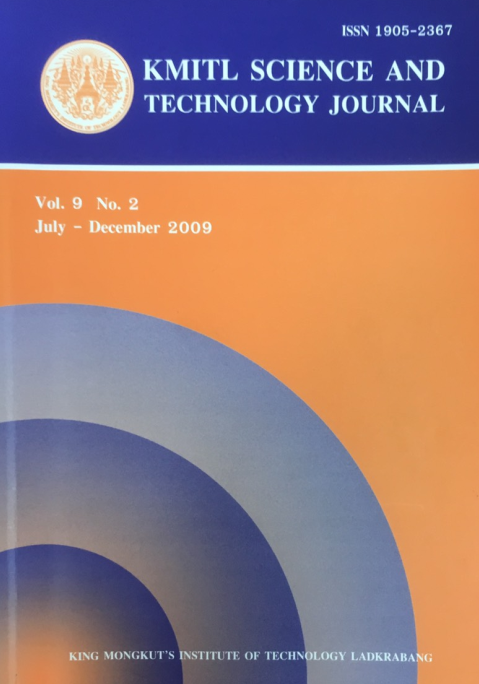The Invention of Mountable Camera Device for Photo Taking of Light Spectra Diffracted from Grating
Main Article Content
Abstract
The device is consisted of five simple convex lenses with various focal lengths, a collimator system, a transmission grating and a CMOS (Complementary Metal Oxide Semiconductor) detector in DSLR (Digital Single Lens Reflex) camera. They are mounted on optical bench covered with PVC horizontal cylinder which is portable. The obtained images stored as .jpeg file format are transferred from camera to PC for data acquisition and analysis. This work shows how to invent the device which light color spectral image can be displayed together with the quantitative values of the light intensity analysis. The obtained results of wavelength values
compared with the standard ones are in the range from 0.03% to 1.55%. The benefits of this device are the provision of light color spectral images from experiments to support the observations and
analysis of diffraction color spectra in optical experiments, and it can be utilized as a teaching media as well.
Keywords: CMOS sensor, transmission grating, Fraunhofer diffraction pattern, spatial light
intensity distribution analysis, light color spectral display.
* Corresponding author: Tel: 081-4999350 Fax: 0-2469-5598
E-mail: buncha@swu.ac.th
Article Details
Copyright Transfer Statement
The copyright of this article is transferred to Current Applied Science and Technology journal with effect if and when the article is accepted for publication. The copyright transfer covers the exclusive right to reproduce and distribute the article, including reprints, translations, photographic reproductions, electronic form (offline, online) or any other reproductions of similar nature.
The author warrants that this contribution is original and that he/she has full power to make this grant. The author signs for and accepts responsibility for releasing this material on behalf of any and all co-authors.
Here is the link for download: Copyright transfer form.pdf
References
Diffraction Properties of the Transmission Phase Grating, Optik, 118, 452-456.
[2] Born, M., and Wolf, E., 1999. Principles of Optics, seventh (expanded) ed. Cambridge
University press, Cambridg.
[3] Ramil, A. and Lopez, A. J., 2007. Improvements in the Analysis of Diffraction Phenomena
by Means of Digital Images, Am. J. Phys. 75(11), 999-1002.
[4] Stich, M.I.J., Borisov, S.M., Henne,U. and Schaferling, M., 2009. Read-Out of Multipke
Optical Chemical Sensors by Means of Digital Color Cameras, Sensors and Actualtors B,
139, 204-207.
[5] http://micro.magnet.fsu.edu/primer/digitalimageing/cmosimagesensors.html
[6] Magnan,P., 2003. Detection of Visible Photons in CCD and CMOS: A Comparative View,
Nuclear Instruments & Methods in Physics Research A, 504, 199-212.
[7] Gluck,P., 2006. Teaching Image Formation by a Lens, Physics Teacher, 44, 206-210.
[8] Suppapittayaporn,D., Panijpan,B. and Emarat,N. 2010. Can We Trace Arbitrary Rays to
Locate an Image Formed by a Thin Lens?. Physics Teacher, 48(4), 256-257.
[9] http://people.uncw.edu/ganl/fizix102labs/lab09dispersion1_s2006_102.pdf


